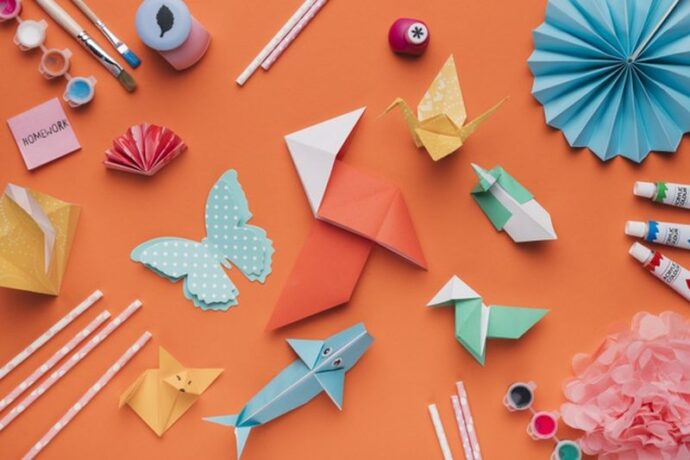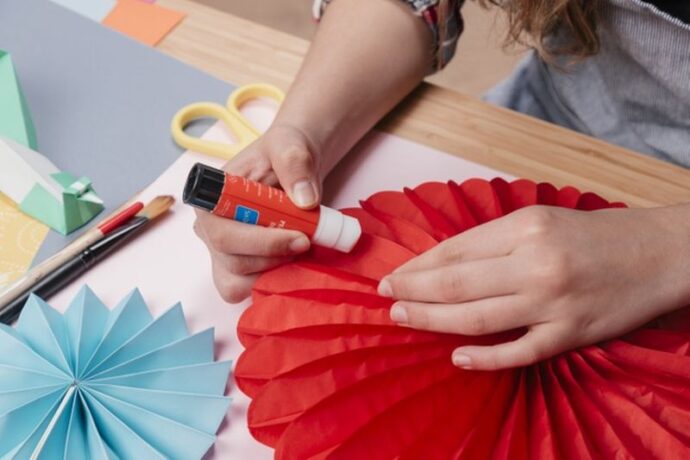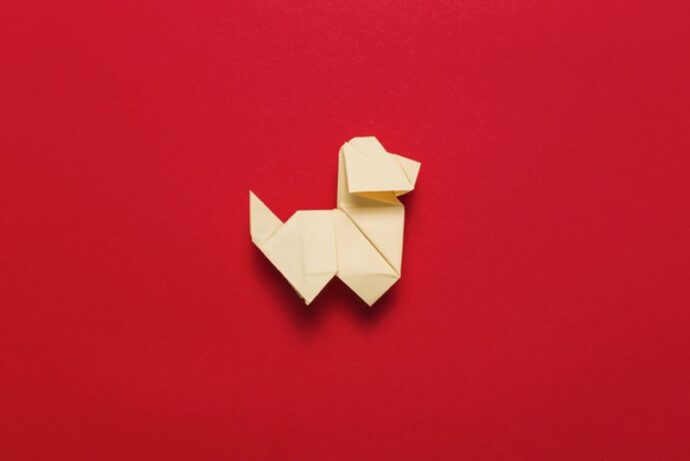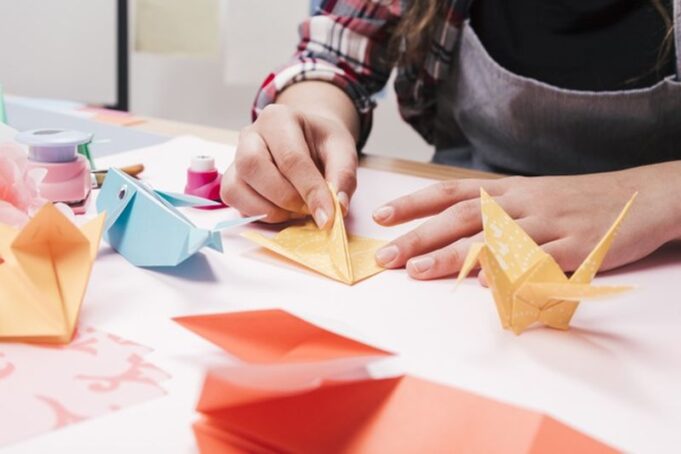When it comes to making origami, there are a few types of paper that can be used. But determining the best one is rather tricky. That’s because of the sheer number of options you have available.
But if you’re interested in finding out the best handmade papers for origami, then you’re at the right place. With all that said, let’s start.
1. Kami
If you’ve ever dived deeper into the many design papers that exist, then you’ll no doubt come across this one. Kami paper is one of the most common types that exist. We use it solely for origami and that’s all due to how easy it is to fold.
The smooth texture paired with the huge color options makes it the best origami starting paper. There are many techniques to use kami and you’ll have to learn a few tricks. One that we can recommend is called the “Duo Kami”. This technique involves putting two squares with different colors against each other. This makes your creations much more interesting thanks to the two different color sides.
One more reason as to why many consider kami to the best origami paper is the fact that beginners will have an easy time with it. Kami is also quite inexpensive and comes in many patterns and colors. One thing that has going against it is the lack of durability. Namely, kami isn’t the strongest origami paper and there is no going back if you manage to rip one square. This is all because Kami is very thin, no more than 63 gsm.

2. Tant
Tant is yet another Japanese creation and its purpose is for origami. When compared against Kami, Tant is still quite thin but not as much as kami. You can buy Tant up to 80 gsm with the lowest being 70. This makes it quite versatile.
The reason why many love folding with tant is because it is super easy to use and you can make all kinds of shapes. From simple to complex designs, there is no stopping tant.
Unlike kami, tant is much more durable and can hold creases much better. Like kami, it comes in many colors and patterns and in many sizes. You can craft using 7.5 cm x 7.5 cm or go the extra mile and craft with 110 cm x 80 cm.
Folding this origami paper is very easy thanks to its unique build.
3. Mulberry
If you know what a mulberry is then you can imagine the origins of this type. Made from mulberry plant fibers, this type of paper is much thicker than traditional ones.
Where mulberry wins the race is in its design and looks. Namely, there is no better-looking origami paper than handmade mulberry. It is the design paper to go to if looks matter to you while crafting.
But you will need to become an expert if you are to use mulberry. The reason for that is its thickness. Thus, we recommend you learn the hang of it before you try mulberry. With all that said, mulberry is still the go-to paper for many experts that know how to manage the thickness. It goes without saying that mulberry presents a challenge for any avid origami expert.
If you’re looking for a mulberry paper, then we suggest you click here.

4. Kraft
For those of you who know a thing or two about origami papers, you no doubt know the origin of this one. Kraft is made in Germany but they don’t use it as design paper. Instead, Germans use it for gift wrapping.
If you know your German, then you probably know that “Kraft” means “strength”. And kraft is precisely the biggest advantage when using this type.
What is so strange about this type is the fact that it is so thin, around 30 gsm, but so strong. You won’t find anything like it.
Many origami experts use kraft paper to try out different things and see how well they hold. Thanks to its sheer thinness and strength, experts can use handmade paper to try out new shapes and new things.
If you’re looking to get into it, kraft is quite inexpensive and can serve a unique purpose. Many recommend kraft when needing to try out new things or do test-folding.
5. Washi
Yet another type made with the help of plant fibers is washi. Washi is some of the best-looking origami paper out there, and it certainly rivals mulberry.
Much like kraft, washi is very durable and very strong. Unlike many other types, washi brings high quality to the table. It is a traditional Japanese paper that is perfectly used for Japanese designs. But the thickness makes it quite hard to use for complex designs.
With all that said, do expect to pay a pretty nice buck for washi as it is one of the more expensive types.

6. Foil
There isn’t a more unique paper than foil. If you’ve never seen it, then you’ll quickly realize that foil brings something else entirely. Although the back of the paper is always white, the front side is where thing’s at.
The metallic feel and look that foil gives is something very impressive. Imagine your origami designs being made with the look and feel of foil.
Although foil isn’t very thick or thin, the perfect balance of 50 gsm and the huge variety of sizes blend perfectly. Namely, with foil, you can get anything from 3 cm x 3 cm squares to 50 cm x 70 cm huge sheets.
If you want your designs to have a metallic look, then foil the way to go.
Conclusion
It can be hard to decide on what to start with. Many prefer kami as it is best for beginners while others prefer washi due to its looks.
Regardless of what you start with, it’s important that you know what your options are. With all that said, we hope that this article is informative enough to help you make the correct decision.















